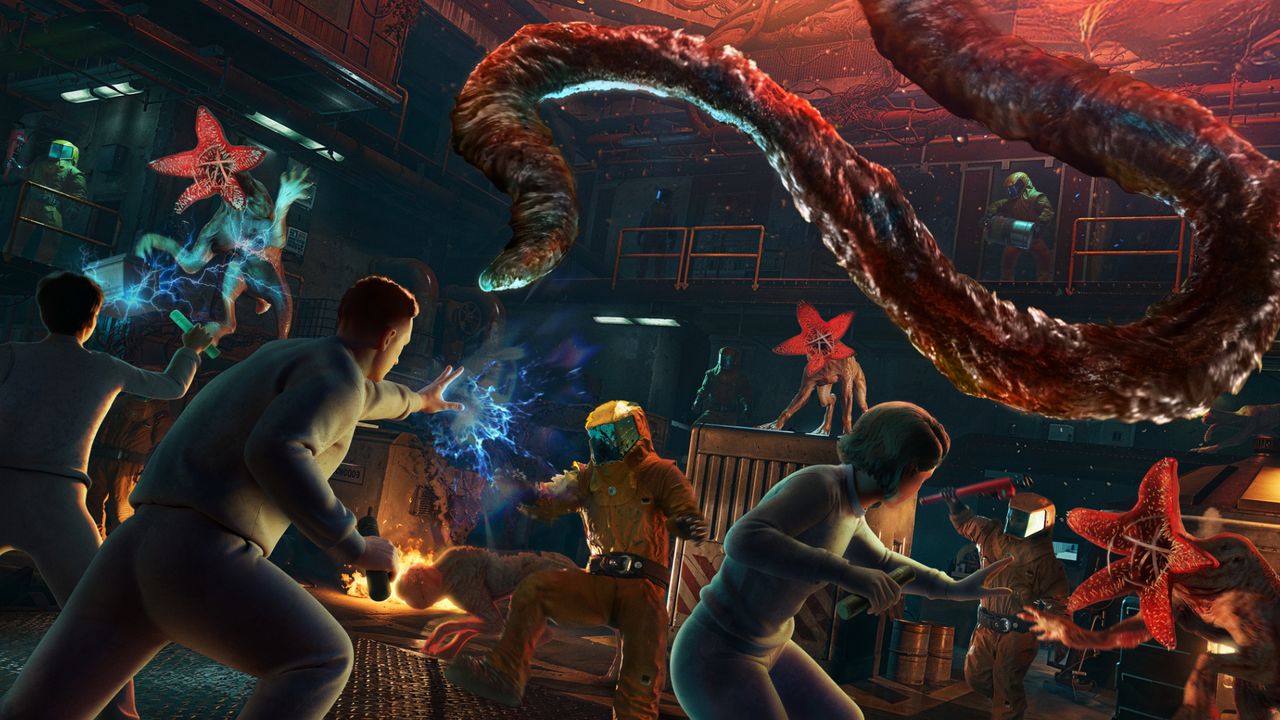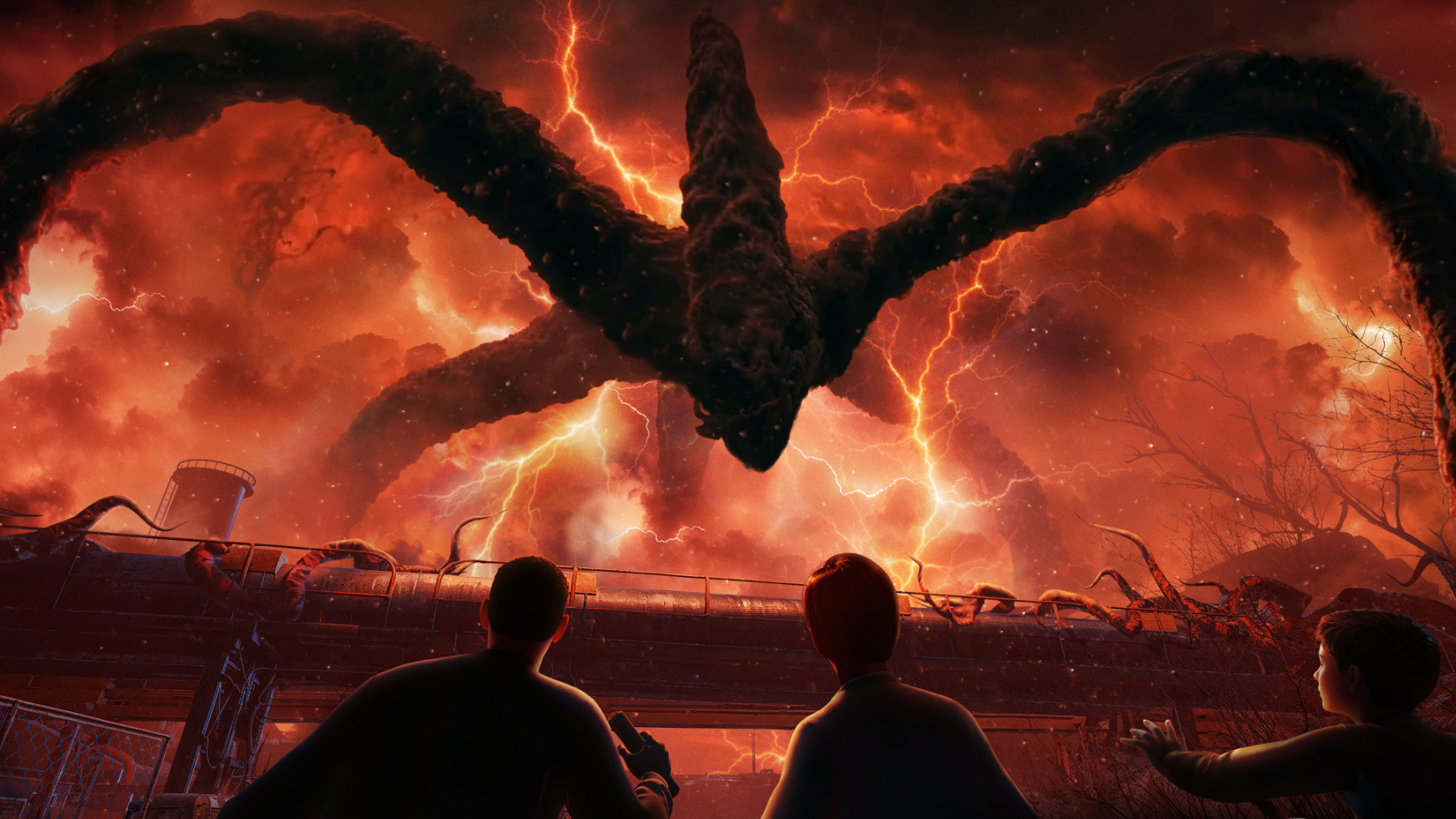
(Image credit: Netflix / Sandbox VR)
Netflix has its eye on your free time in more ways than just one, you know. While the streaming giant has been monopolising people's evenings for years, thanks to its ever-expanding library of shows and movies, in more recent times, it's clearly starting to think more like its older rival, Disney.
That megacorporation has a long history in the world of parks and cruises, avenues that have helped make it huge amounts of money and more of a fixture in people's lives, and Netflix is starting to make inroads of its own. The Netflix House project, even if it'll just be two locations in the US to start with, aims to make mini-parks in key locations, giving people a reason to visit with themed areas and immersive experiences.
What experiences, though? Well, those who've really been paying attention in the last couple of years will have noticed Netflix making some interesting partnerships. Back in 2019, it worked with Secret Cinema on a Stranger Things event, one that I attended and really enjoyed, but more recently, it's been on a streak with VR company Sandbox VR.
Having worked together on Squid Game and Rebel Moon experiences, it's now releasing a new Stranger Things offering, one that can be played now at a wide array of Sandbox locations in the US and UK. I got to head to High Holborn in London a little early to try it out last week.
Stranger Things: Catalyst is a room-scale VR experience, meaning you'll strap on ankle and wrist monitors, as well as an HTC Vive Focus 3 headset and some headphones each. You'll then be able to see each other in real-time in your virtual world, working together and avoiding the very real threat of clattering into each other.

(Image credit: Netflix / Sandbox VR)
The experience lasts around 20 minutes, and kicks off with you and your teammates choosing suspiciously bald avatars, before you're dropped into the bleak playroom that the show's main character Eleven grew up in. You play as some other test subjects in the same facility, recruited at a moment's notice to use your telekinetic powers to fight off an explosion of demogorgons, batlike flying monsters, and other nasties.
This happens in a series of room-sized environments, starting with a fight for survival in the playroom before the action moves into the bowels of the facility, where experiments have gone awry. Finally, you'll escape and fight more on the (large) back of a moving truck.
Throughout, you basically have three ways to interact with the world around you. Firstly, and sort of the whole point of Sandbox VR's work, is that you can move around – dodging attacks and changing your viewpoint slightly. The box you can move in is fairly tight with four people, though.
Secondly, you can chuck things at enemies to damage them, from boxes and tools lying around to chunks of masonry and glass if nothing's to hand. This is done with a simple controller you each get (the catalyst from the game's title). Finally, when enemies get close, you can slap out your empty hand to push them back, and the game occasionally demands every player do this a bunch of times as a quick-time event to dismiss threats.
This means that most of your time is spent using the controller like a Wiimote, waggling around to chuck things at baddies, while your other hand periodically wafts out in self-defence. It's funny to watch back at the end, when you get a highlight reel of some key points from both the in-world and real-world perspectives.

(Image credit: Netflix / Sandbox VR)
It's all frantic fun, but also pretty simplistic and not exactly demanding – with your level of Stranger Things fandom likely to dictate how much you overlook some other technical shortcomings. Coming from even budget VR headsets like the Meta Quest 3S, the lack of any proper finger tracking is a letdown – while the system here tracks your limbs, it only has your wrists and ankles to use, so anytime you look at your character's hands, they're just dead and inert.
This is echoed by character movements, which are stiff and jerky at the best of times, and while it's charming to see this jankiness embraced, surely everyone involved would prefer it if it were simply... better.
I talked to a spokesperson from Sandbox after my experience ended, who said that Catalyst had taken around a year in total to develop, but that the company's pipeline meant it could now probably make an experience from the ground up in six months if pushed. That's impressive, on the one hand, but the reality is that a certain lack of polish did let the whole thing down, to my mind.
Those characters from the show you do see don't really look quite right, and while the lip-syncing was alright, their animations were at times amusingly 2010-looking. At times, I couldn't help thinking of Half-Life's scientists, in fact, from way back in 1998. Environmental detail was nice, but that gameplay loop wasn't exactly riveting beyond a couple of welcome jump scares.
Here in the UK, booking as a sole adult can cost from £25, and that's quite a steep price for £20 minutes – even if it's a pretty memorable 20 minutes. For that price, I'd want something of the quality of a great escape room, with some moments that require genuine teamwork or intuition, rather than just universal flailing.
Then again, I also don't really see the value proposition in going to a Disney park, so it's possible I'm not the target audience. If Netflix wants to get people making repeat visits to its Netflix House locations, down the line, though, I think it might need to polish things up a little more.

-
 C114 Communication Network
C114 Communication Network -
 Communication Home
Communication Home


